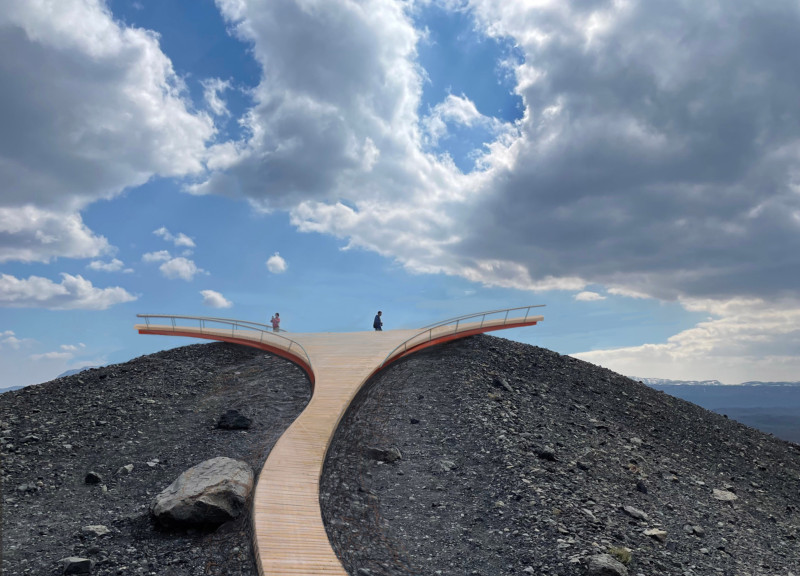5 key facts about this project
The design is located in a dramatic volcanic landscape that enhances its functionality and cultural significance for visitors. It takes inspiration from the structure of the Bailey Bridge, utilizing a single standard element arranged in different configurations to create a cohesive framework. This approach allows for both structural efficiency and a harmonious integration with the surrounding natural environment, ultimately aiming to provide observation points for those who come to explore.
Structural Framework
Two cantilever arms form the backbone of the structure, carefully engineered to work in balance. This design choice ensures stability while efficiently using materials. The focus on effective weight distribution reduces the need for additional supports, making the structure more sustainable and light on the landscape.
Gravel-Filled Trays
Gravel-filled trays play a crucial role in the design, providing mass damping to counteract the weight of the cantilevered arms. These trays are partly buried in the ground and filled with locally sourced gravel, creating a link to the area. This choice enhances the overall performance while reminding users of the project’s connection to its immediate geography.
Lookout Post and Cultural Significance
A lookout post is positioned prominently on the volcano rim, serving both as a viewing platform and a connection to local mythology. This aspect reflects the story of the Icelandic wild horse, known as Nykur, weaving together cultural heritage and physical form. It encourages visitors to engage not just with the structure itself but also with the rich narrative embedded in the landscape.
Materiality and Aesthetics
Folded and welded corten steel sheets, 4 mm thick, give the structure durability and a distinct visual character. The choice of this material means it will develop a natural patina over time, allowing it to blend with the volcanic setting. This aging process adds another layer to the architecture as it continues to adapt while maintaining its functionality.
The transition from the boardwalk to the lookout post guides visitors through an interactive experience, inviting them to walk a path that emphasizes connections to the site and the unique relationship between built form and the natural world.


















































